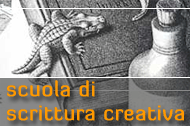
« indietro
Review
TERESE COE, Shot Silk
Hemet, CA, White Violet Press 2015, pp. 93, $17.00
In Terese Coe’s book Shot Silk, a three-stanza poem entitled Away offers an interesting insight into her imaginative world. It opens with the words: «Tonight once more I’ll run away with me / to be the creature I could never be», and proceeds with an intriguingly diverse list of fantasies, ranging far over time and space, over the worlds of history, art, religion and literature, all with a sprightly lightness of touch; here is the central stanza:
I might have been a sadhu at Pashupati,
a dancer-devotee of Sarasvati,
Rene Descartes, a boatman on the Nile,
even Mary Stuart at her trial.
I might have been a runner in the Andes,
a Columbine to Restoration dandies […]
The next stanza brings together Jabberwocky, Murasaki and Euripides, each, it seems, of equal fascination to the speaker. Although Coe is firmly based in Manhattan (as a poem like Notes from a Tenement Downtown, steeped in local history, makes clear), she has travelled widely in the world’s realms of gold, both in fact (a period spent in Nepal has left a particularly strong mark) and in her readings.
The cross-cultural benefits are evident; she writes a letter to Chekhov, showing a great understanding of his life and his imaginative world, using the rhyme-royal stanza that W. H. Auden (another Manhattanite) adopted to address Lord Byron. She writes a brilliant poem entitled Seeing Matisse in which almost every other word (and in particular the rhyming words) is borrowed from the French; the gorgeous mélange of exotic loan-words creates a superbly colourful counterpart to the painter’s visual world. Elsewhere she plays with the form of Christopher Smart’s poem about his cat Jeoffry to describe her son, Shay. And she gives us an ingenious Shakespeare cento, entitled self-deprecatingly Trifles.
She uses the form of the rondeau to pay well-judged homage to Rhina Espaillat («Apollo gives his luminosity / to one who tempers rhyme with remedy»), and addresses Emily Dickinson in short-lined quatrains, which rhyme subtly but effectively between stanzas. She uses a similar form, but with a livelier rhythm, to describe an urban landscape in Tompkins Square:
The sweep of elms’
calligraphy
is read
against the sky
where boughs of lithe
parabolas
spill out
their earthy dye
and everywhere
the chaos of
unmeaning
breathing back,
uncurling green
samaras,
the abeyance
of the black.
These small but significant signs of seasonal change in a city-square are beautifully celebrated here; the shapes and colours of the square’s famous elms (it was under one of them that the American Hare Krishna cult was founded) are seen as providing legible signs of meaning in an otherwise chaotic world. Each short stanza reflects the sweeping curve of a parabola, and the poem as a whole could be thought of as an uncurling samara, in dancing downward movement but offering seeds of hope; it is perhaps worth remembering that the word «parabola» is closely related to the word «parable». «The abeyance / of the black» could be seen as Terese Coe’s version of Frost’s «momentary stay against confusion», which was his definition of the clarification of life offered by poetry.
The second half of the book is entitled Variations and is devoted to versions of poems by Ronsard, Heine, Rilke and Borges. She shows great ingenuity in preserving the forms of the original poems. Here, for example, are a few suitably earthy lines from her translation of Ronsard’s Epitaph for François Rabelais, complete with comic rhymes:
In one suck down the hatch
His gullet could dispatch,
With two shakes and a burp,
More milk than a pig can slurp,
More rivers than Iris can nuzzle,
More waves than a beach can guzzle.
I am less competent to judge her faithfulness to the originals by Heine, Rilke and Borges, but her versions read like fine poems in their own right; as the poet John Whitworth says in his blurb, the fact that the translations «read like her poems» is «good». To judge by them, she can stand alongside such major contemporary poet-translators as A. E. Stallings, Dick Davis, and Aaron Poochigian, as one who has brought foreign poets to new life in our language. It is to be hoped that she will eventually bring out a book-length translation of the poems of one of these authors; I hope it will be Ronsard.
Gregory Dowling
dowling.gregory@gmail.com
¬ top of page






